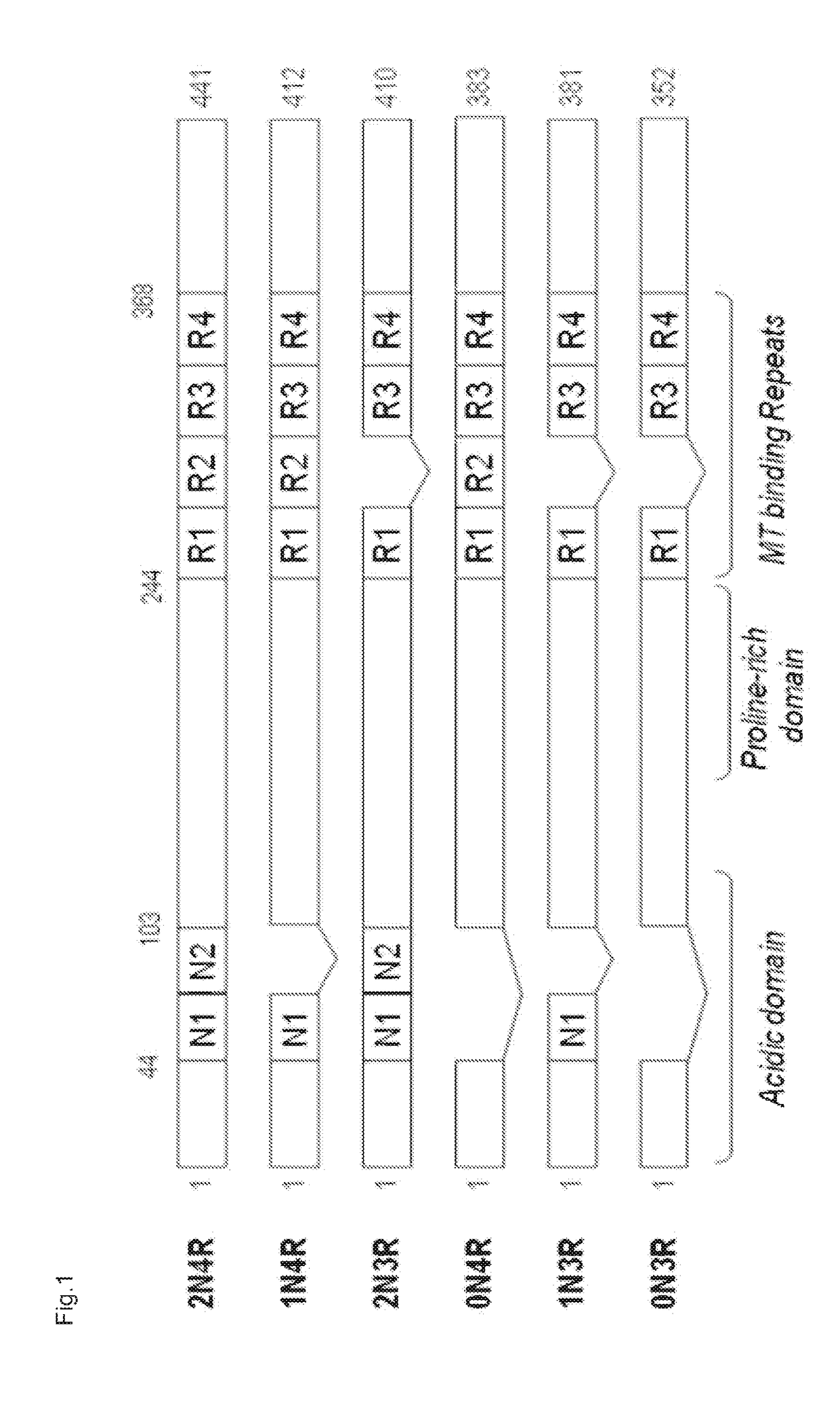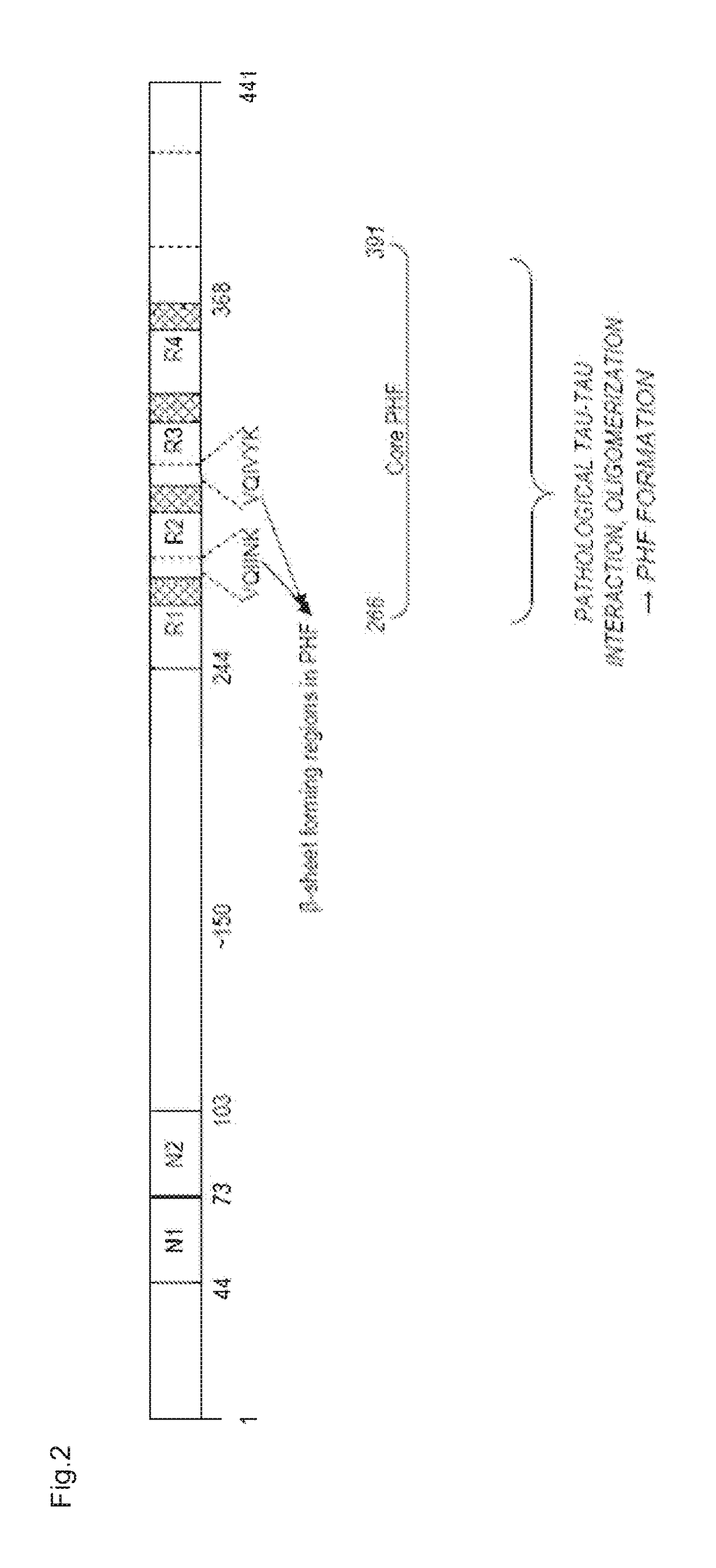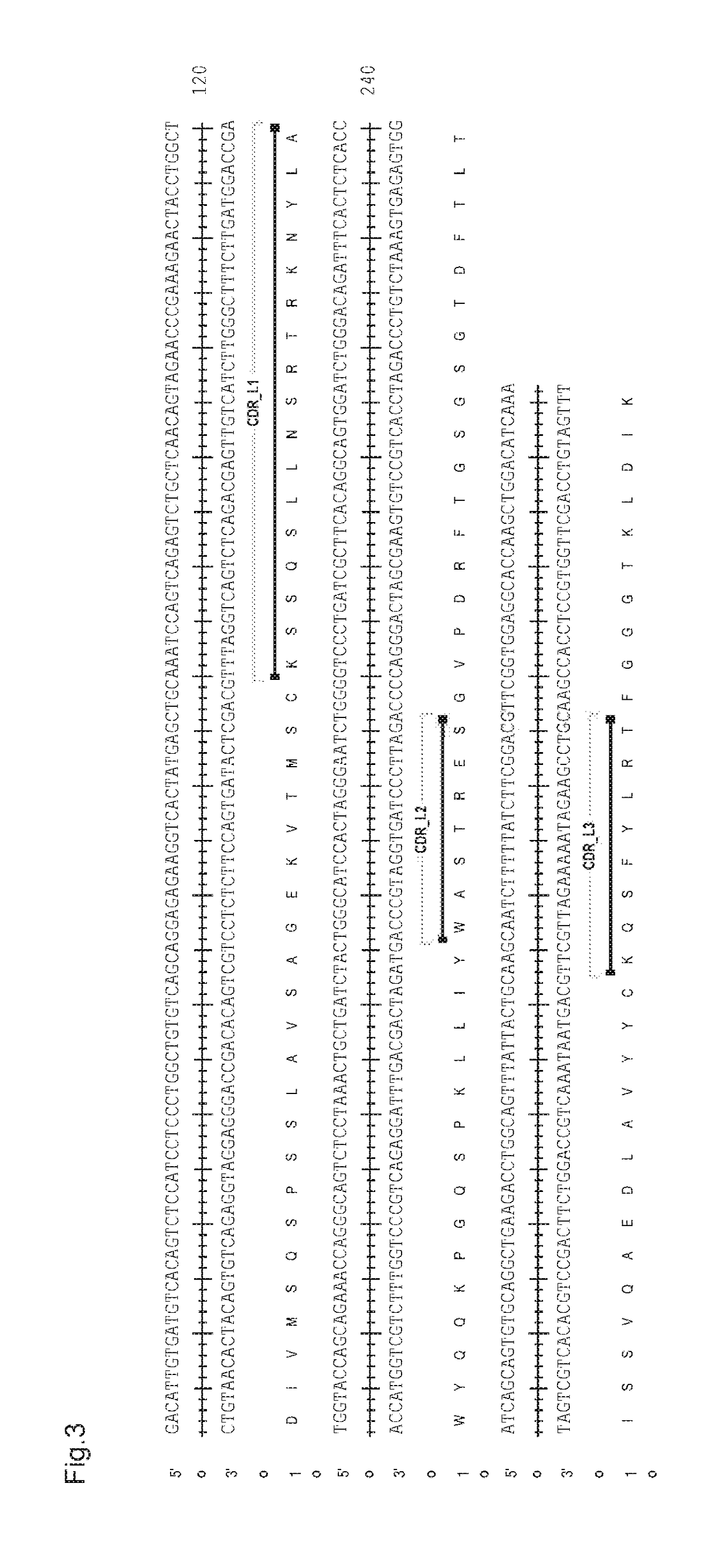Humanized tau antibodies in alzheimer's disease
- Summary
- Abstract
- Description
- Claims
- Application Information
AI Technical Summary
Benefits of technology
Problems solved by technology
Method used
Image
Examples
example 1
Generation of a Chimeric Version of the DC8E8 Antibody
[0834]Total RNA was isolated from DC8E8 hybridoma cells using the RNeasy Mini protocol for isolation of total RNA (Qiagen). DC8E8 RNA (3 μg) was reverse-transcribed to produce DC8E8 cDNA using the GE Life Sciences 1st strand cDNA synthesis kit following the manufacturer's protocol. DC8E8 cDNA was amplified by PCR in 3 separate reactions as described in Section 8.3. Immunoglobulin heavy chain variable region (VH) cDNA was PCR-amplified with heavy chain primers M13-MHV6 plus MHCmix and kappa light chain PCR primers M13-MKV5 plus MKC using the Phusion High-Fidelity PCR Master Mix (Thermo Scientific). The result of each PCR reaction was a single amplification product that was purified using the QIAquick PCR purification kit and sequenced in both directions using the M13-Forward (TGTAAAACGACGGCCAGT (SEQ ID NO: 158)) and M13-Reverse primers (CAGGAAACAGCTATGACC (SEQ ID NO: 159)).
NameSequence (5′3′)MHV6TGTAAAACGACGGCCAGT(SEQ ID NO: 160)M...
example 2
Humanized Variants of Mouse DC8E8
[0840]The immunoglobulin sequence M65092 was chosen as the human donor candidate for the humanized heavy chain framework (FW) due to its higher sequence identity and similarity to the DC8E8 variable heavy chain region (VH). The sequence alignment of these two variable regions can be found in FIG. 8. The next step was to graft CDR1, 2, and 3 from DC8E8 VH into the acceptor FW of M65092. The human residues at Kabat positions 9, 21, 27, 28, 30, 38, 48, 67, 68, 70 and 95 are not conserved in the wild-type variable heavy chain region (RHA) of M65092. Due to their position (within 4 Å of a Kabat CDR using the program Discovery Studio (Accelrys), except for Pro at positions 9 and 21) these residues were tested for their importance in tau binding. This step is one of the most unpredictable procedures in the humanization of monoclonal antibodies, and necessitates the identification of critical framework residues from the parent antibody that need to be retain...
example 3
Properties of the Humanized Versions of DC8E8
[0843]Tau Protein Binding by DC8E8 Antibodies
[0844]Binding activity to Tau protein (151-139 / 4R) was measured by Binding ELISA, as described in Example 5. The data shown in FIG. 10 show the binding potency of the initial versions of the humanized DC8E8. Although all versions bound to the Tau protein, of this initial set, those antibodies containing the RHB version of the heavy chain appeared to bind better. This version of the heavy chain contains back-mutations to murine residues at all of Kabat positions 9, 21, 27, 28, 30, 38, 48, 67, 68, 70 and 95, indicating that one or more of these residues is important for retaining full antibody binding activity.
[0845]Further versions of the humanized heavy chain were synthesized, each with a single back-mutation, and were tested for binding by ELISA. Results for the IgG4 versions are shown and summarized in FIGS. 11, 12, and 13. Versions of the antibody having RHB, RHD and RHE were consistently be...
PUM
 Login to View More
Login to View More Abstract
Description
Claims
Application Information
 Login to View More
Login to View More - R&D
- Intellectual Property
- Life Sciences
- Materials
- Tech Scout
- Unparalleled Data Quality
- Higher Quality Content
- 60% Fewer Hallucinations
Browse by: Latest US Patents, China's latest patents, Technical Efficacy Thesaurus, Application Domain, Technology Topic, Popular Technical Reports.
© 2025 PatSnap. All rights reserved.Legal|Privacy policy|Modern Slavery Act Transparency Statement|Sitemap|About US| Contact US: help@patsnap.com



